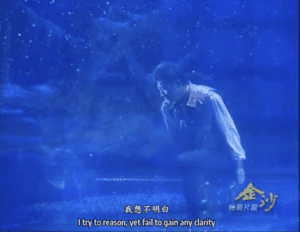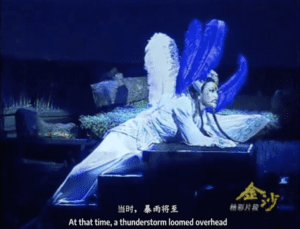From my perspective, musical play is one of the best representation of synesthesia. It is more than simply acting or music, but is a combination of vision and listening. Thus, you see through the music, you listen through the performance becomes an undivided whole. For example, in one Chinese musical play named Jinsha, the song beyond the horizon uses the flute to present a vision of white snow, and the actor strings out the note to make the audiences to feel how the snow is flying and wandering in the sky. There is not exactly real snow on the stage, but we can feel the scene.


The screenshot of the video, source link: https://www.bilibili.com/video/av63168526/?spm_id_from=333.788.videocard.1
This is also mentioned in the reading material. The author cites Locke’ s work in which he “described a blind man who associated the color scarlet red with the sound of a trumpet” (Locke, 8-9). Through this art piece, I get to know better about how the sense of listening and vision can be linked and communicated. I can use different colors and shapes to present the sharp or soft, high or low musical pieces, I can use different notes to present bright or dark vision view as well.
As for me myself, I strongly agree with the idea mentioned in the reading material that “the occurrence of synesthesia is substantially influenced by early childhood experiences” (Emrich, Neufeld, Sinke, 418). I do believe the synesthesia varies from person to person because everyone has different life experience. Listening to a piece of long high music, some may see the snow flying in the sky, some may see the dolphins jumping out of the ocean. Like one of my favorite music piece I Love You, I see the floating river while one of my friends says that she just see the tears in one’s eye. That is because we have different experiences, thus, we have different understandings.
Emrich, Hinderk M., Janina Neufeld, and Christopher Sinke. “Synesthesia, a Neurological Phenomenon.” In See This Sound: Audiovisuology a Reader, 414–23. Köln: Verlag der Buchhandlung Walthar Köning, 2015.